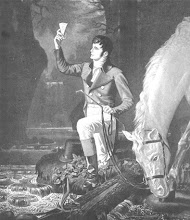There were probably only a handful of people who truly understood what was happening in the tiny hamlet of Curtisville in 1866. Not far downstream from today's Stockbridge Bowl, a dam and race were being built and a mill was taking shape. That in itself was certainly no big deal. Hundreds of such structures adorned scores of streams and rivers up and down the Housatonic Valley.
The mill race from the dam upstream delivered horsepower to the mill downstream.
But if anyone had seen Friederich Wurtzbach, a newcomer from Germany, installing the machinery inside, it would have left spectators shaking their heads. They didn't know the world of papermaking was about to change forever.
Until just after the Civil War, paper in America was made primarily from rags - cotton and linen - with some other sources of cellulose such as hemp and straw mixed in. With the arrival of peace between the North and the South, the demand for paper skyrocketed. But the supply of raw materials could not keep pace. Papermakers were desperate for pulp.
The German paper industry had already solved this problem by making paper out of trees. That technology was now on its way to the United States.
From "The Jones Story," here is a remembrance by Carl Wurtzbach of Lee, son of Friederich Wurtzbach. Friederich was an expert papermaker employed by the Pagenstecher brothers, emigrants from Germany .
Alberto Pagenstecher had made some money in railroad construction work in South America and he wrote his nephew Albrecht in this country, asking advice on possible good investments in United States Germany America
Alfredo came to America and joined his nephews, imported machines from Germany, sought and found the right site, erected a small, wooden mill, bringing from Germany Friederich Wurtzbach to supervise construction and the wood-grinding process. Wurtzbach was a skilled woodworker and before leaving Germany
After a short period of experimentation, on March 5, 1867, Wurtzbach successfully turned out the first batch of wood pulp ground from native Berkshire poplar.
Wurtzbach never intended to remain in America
The great discovery that paper could be made from the nation's plentiful trees was not met with enthusiasm, despite the shortage of traditional raw materials.
Again, from The Jones Story: "And neither was it too enthusiastically received in this country, at first. For at this time, introduction of 'foreign matter' into paper made from rags was, more or less, considered shameful adulteration. However, it was tried out; although it is more a matter of local legend if not of history, that the first wagonloads of new pulp which were to be processed in Crow Hollow mill at Lee, were hauled from Curtisville by a roundabout route at night, to keep it from being known that the stuff was used in papermaking.
"Whether this was from a desire to keep it as a possibly valuable industrial secret, or because it was feared it might put a blot on the rag escutcheon of the manufacturer, it is not known. This pulp was processed at the Columbia Mill in Crow Hollow, Lee, under supervision of Wellington Smith. So here on March 18, 1867, was manufactured the first newsprint from wood pulp in America."
After Smith's success became widely known, the Pagenstechers were rushed with orders. They built a second mill in Luzerne, New York, but abandoned it soon afterward for the greater water power to be obtained at Palmer's Falls.
This mill was to become the foundation for the International Paper Co., and it sprouted from a tiny little mill in a tiny little hamlet on The Paper Trail.
Today, a small stone monument, with an original grinding stone and commemorative plaque, mark the site of the original mill.
To learn more about the Wurtzbachs, the Pagenstechers, Curtisville and the advent of wood pulp in American, you are invited to visit The Stockbridge Library Association Historical Collection, located at 46 Main Street in downtown Stockbridge, Mass., just a couple of doors down from the historic Red Lion Inn. I have spent a couple of very informative sessions there with Curator Barbara Allen. The Library Association has a modest but important collection of materials and artifacts, including a scale model of the first pulp mill.
The Association is also home to the Field family papers. Cyrus Field, a local boy, laid the Transatlantic Cable, and this great innovation is closely tied to The Paper Trail. We'll get to that story later.
If you would like to visit the Association, Barbara is in attendance Tuesday, Wednesday and Friday from 9 a.m. to 5 p.m. To view specific collections, please call in advance: (413) 298-5501.







No comments:
Post a Comment